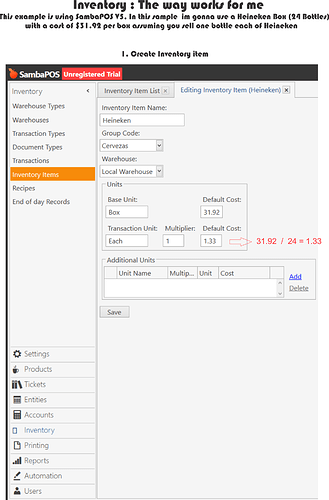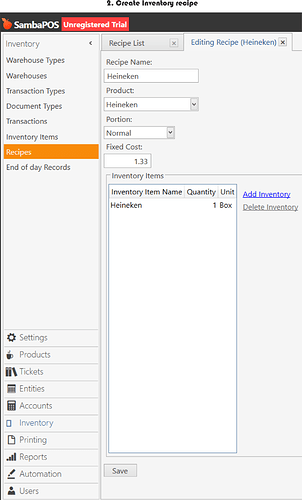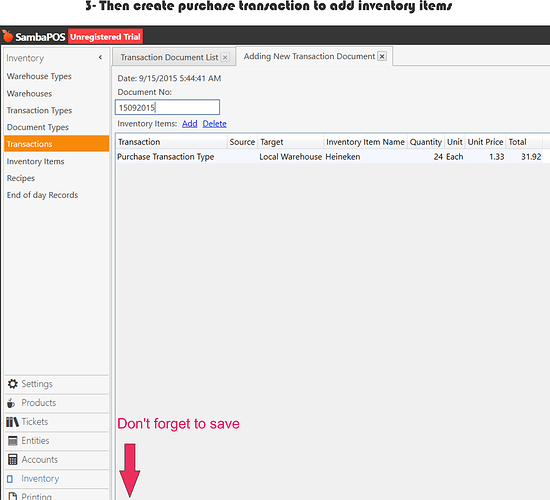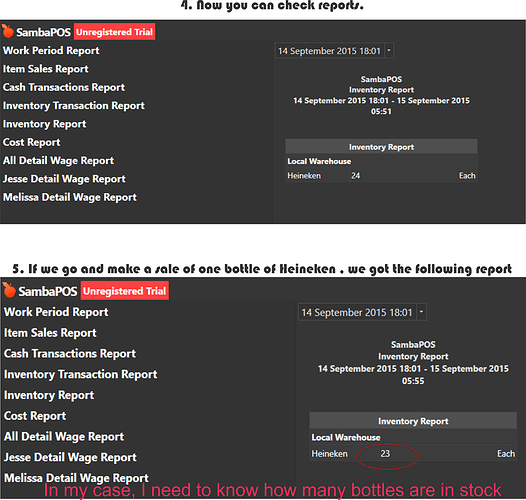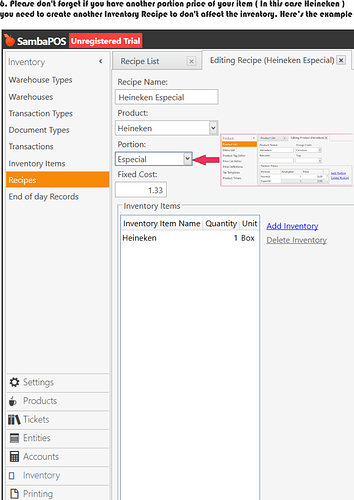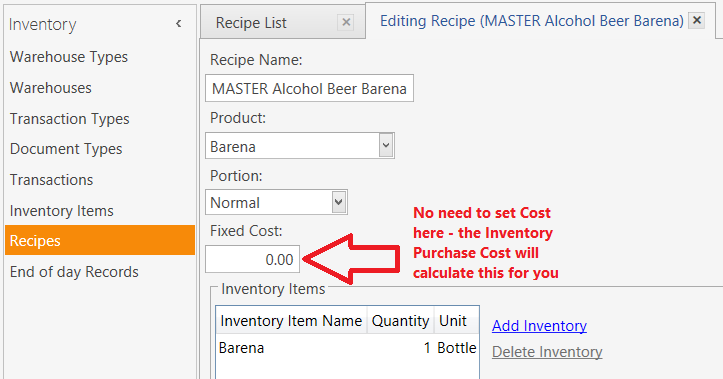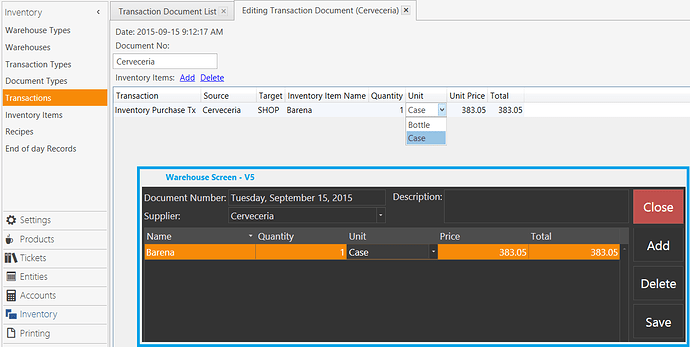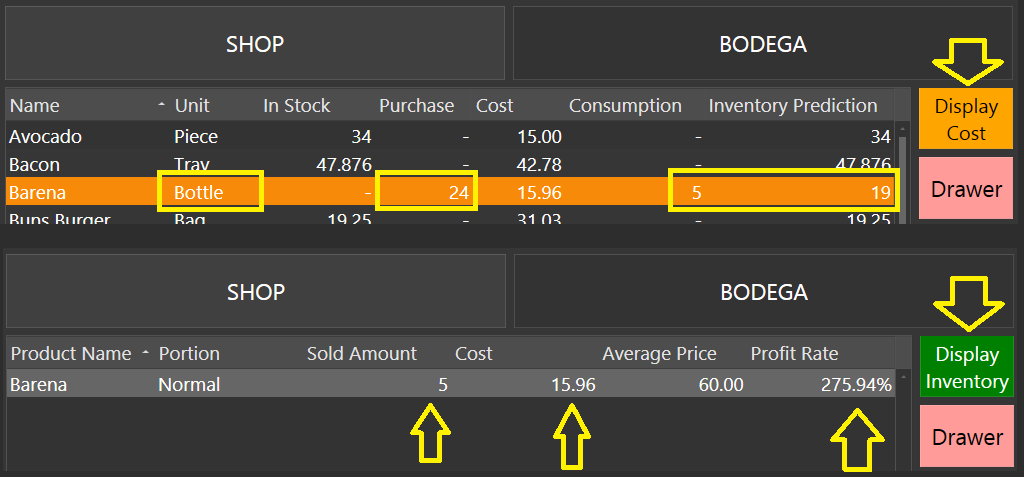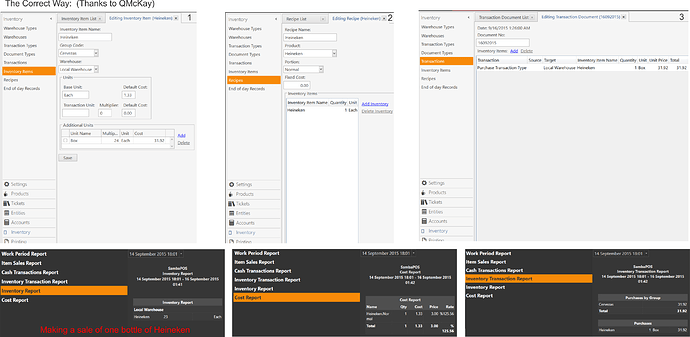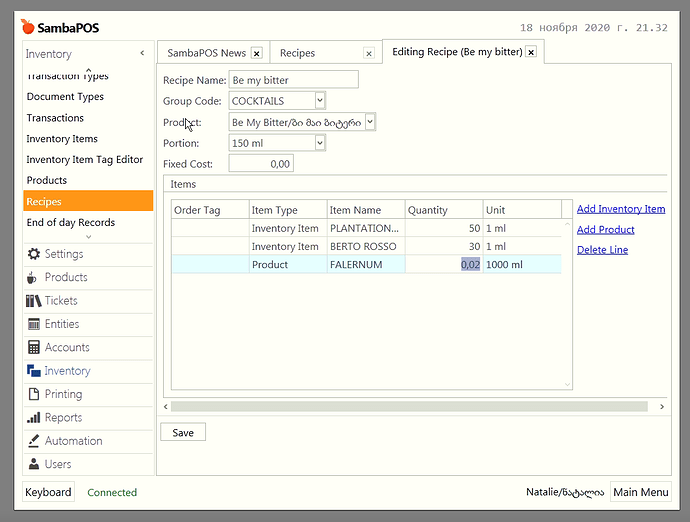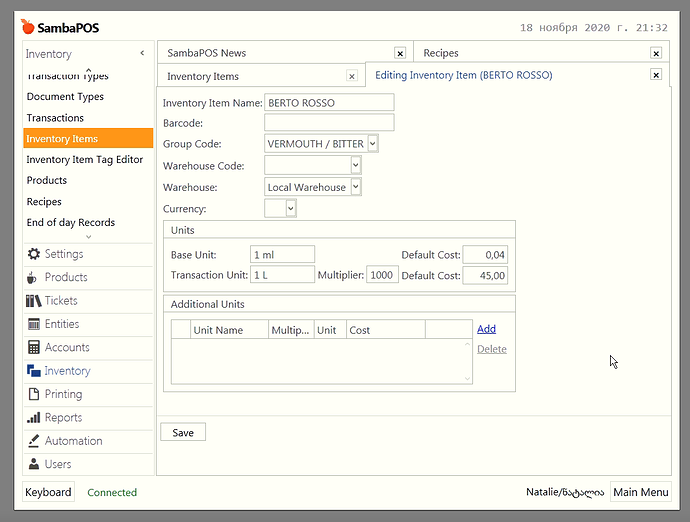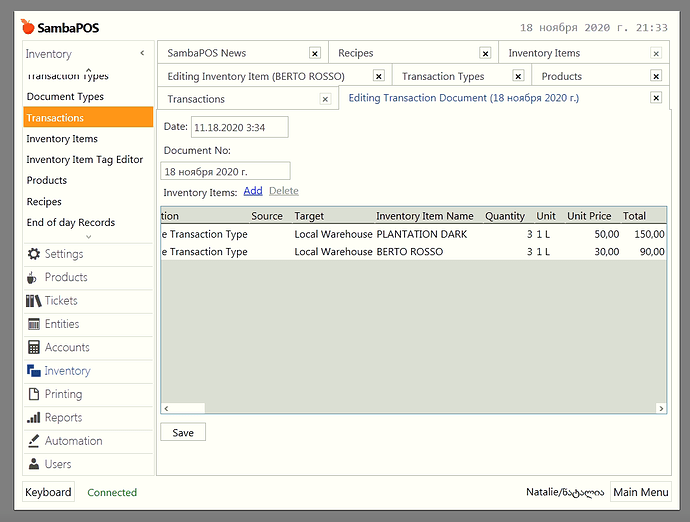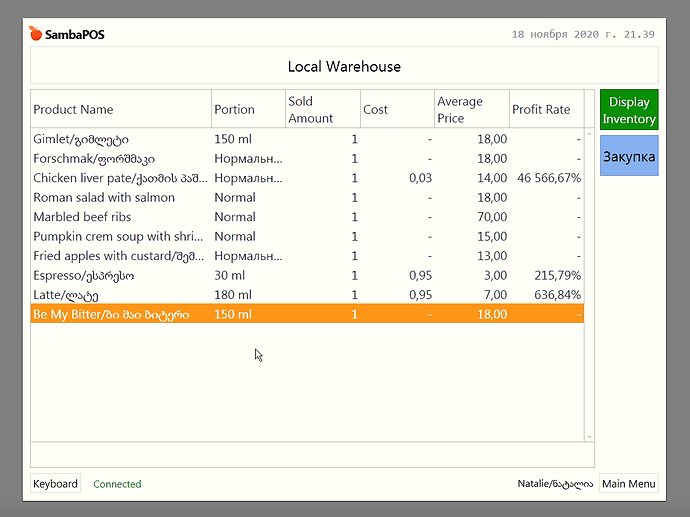Interesting Methodology. You set it up backwards, at least compared to how it was designed to work.  Even so, if it works well for you, kudos!
Even so, if it works well for you, kudos! 
P.S. you should should be able to set it up as follows (not backwards) to get the same result…
###Inventory Item:

###Recipe:
The Cost is directly tied to the Base Unit. If you set up the Inventory Item as above, where the Base Unit is Bottle (not Box or Case), then there is no need to set a Fixed Cost here - the Purchase Transaction and Sale of items via the Recipe will calculate this for you.
###Purchase (V5 outlined in Blue):
Notice that we can still purchase by Case, instead of Bottle. This is more convenient, since we set up our Inventory Item Multiplier for Case to be 24 Bottles - now we don’t need to remember how many units are in a Case of Beer, Wine, Vodka, etc when we make our purchase. We just purchase by the Case.
###Sell 5 then check stock (Warehouse Screen in v5, or End of Day Records in v4):
Notice the Inventory is still reported in Bottles. This is because we did not define a Default Transaction Unit.
The other great thing about this is that if you click the Display Cost button, it will show your Cost (Average Cost based on your Purchase Price), Average Price (what you sell it for), and your Profit Rate!
Reupload this pic please…
tks
Thanks @QMcKay you were right, Its your way the better one, Sorry for my mistakes, I’m not expert neither a developer or script knowledge, I just want to help the people like me. 
I did the same, but I don’t see the cost price
Q passed away two years ago.
Which cost price are you not seeing?
Nothing related to this post, But just thought I would like to send my respect to Q, and I only found out that he passed away, it is very strange, as I have been reading so many of his posts lately and learnt so many things. RIP
Yes Quincy was everywhere. He, I, and Emre touched and read just about every post in here. Its never been the same since they left however my passion for SambaPOS has only increased, I just wish they were both here still to see our growth.
My condolences … I entered all the recipes and inventory. When I make a purchase and then sell an item, if I open “Display Cost”, I see a line with the item, but there is a dash in the place of the price. Base unit price has been set.
You must fill cost field when a purchase transaction is done or did you fill default cost?
Did you do a purchase transaction and put in the price it cost you when you purchased?
I have recipes with items and products, all inventory items have base unit cost. Field “fixed cost” is null. And for testing, I “purchase” inventory items.
Something doesnt look right. You defined default cost as 45,00 but in your purchase transaction you purchased it for 30,00 Why did you do that? If your going to type a cost in the purchase transaction then do not define a default cost.
I thought there was no dependency here. If prices are constantly changing, then should I specify 0 in the base unit and transaction unit? I thought that you can set a standard price value in the inventory and, in case of fluctuations, change it during the purchase and this will be taken into account. Unfortunately, there is not a word about this in the documentation.
No if your gonna have fluctuated prices set it to 0
